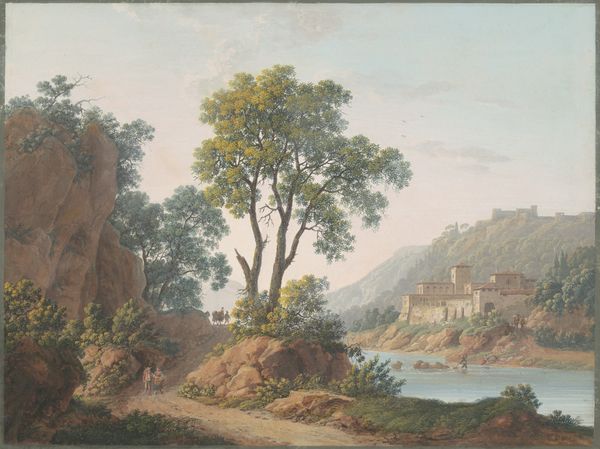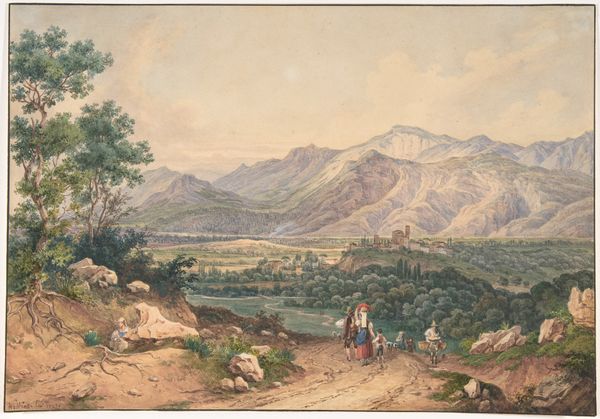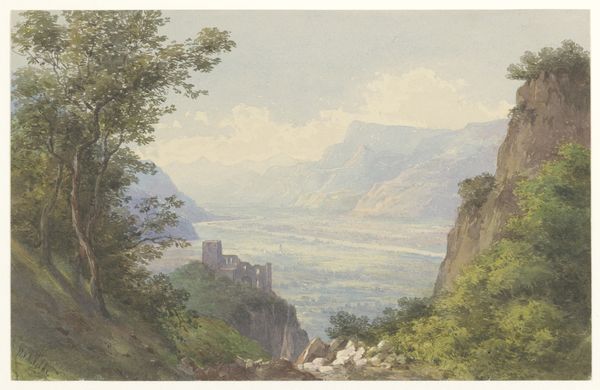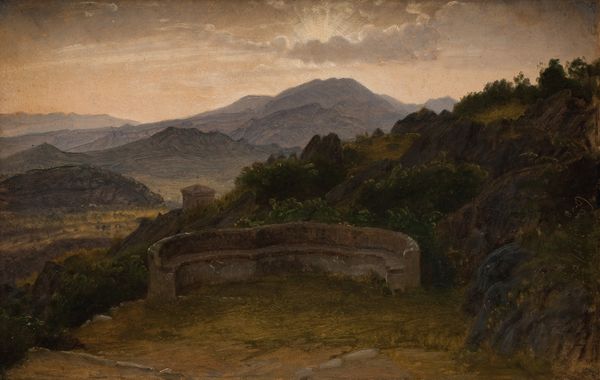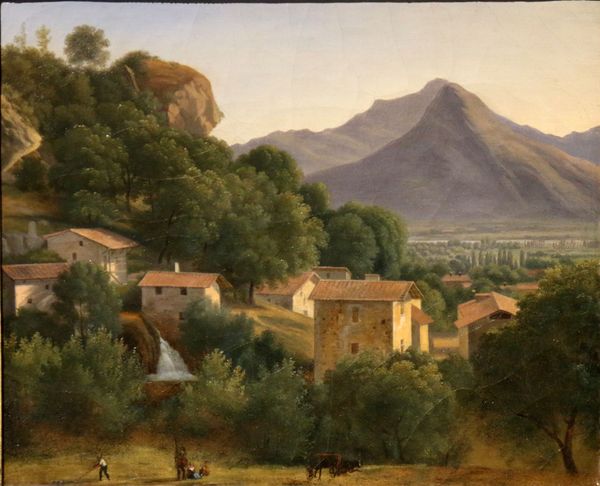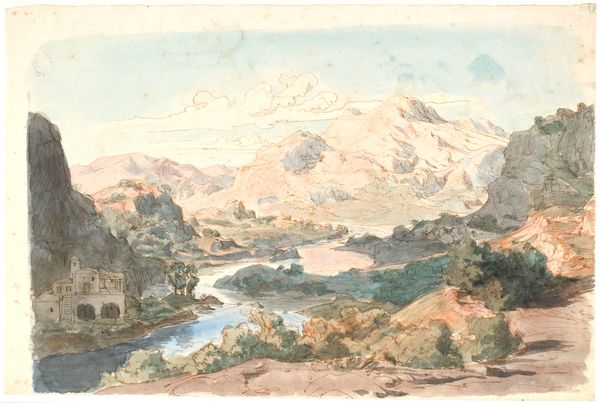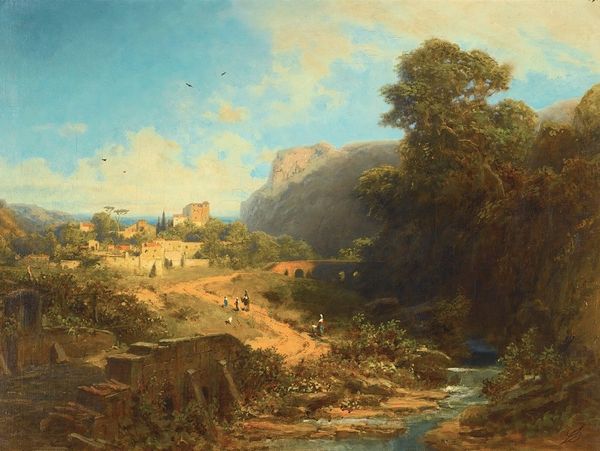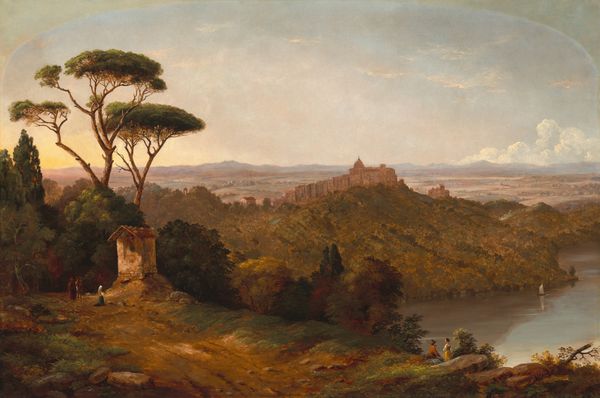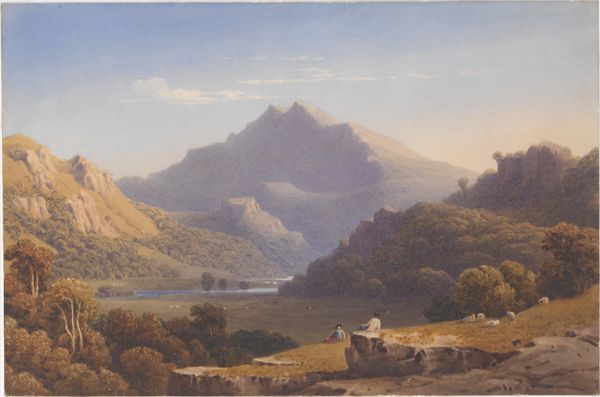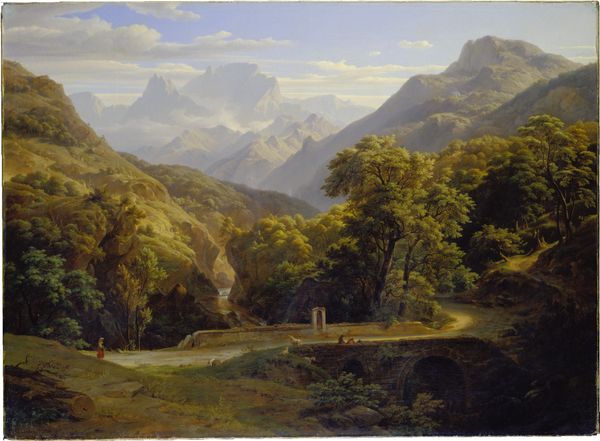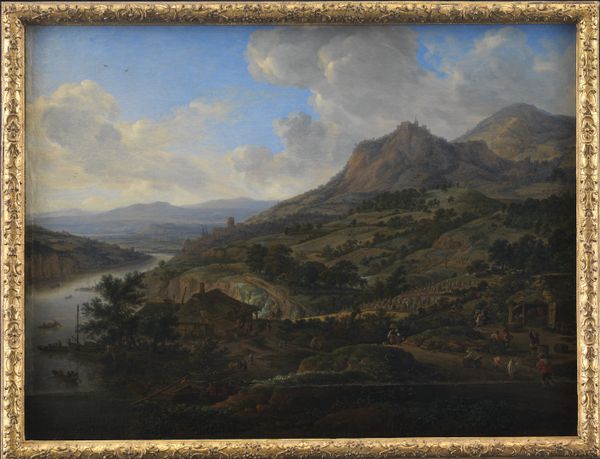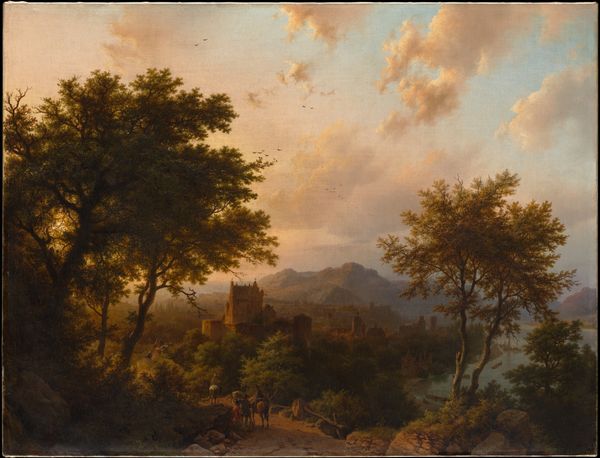
drawing, watercolor
#
drawing
#
landscape
#
watercolor
#
romanticism
Dimensions: sheet: 63.8 × 96.7 cm (25 1/8 × 38 1/16 in.)
Copyright: National Gallery of Art: CC0 1.0
Curator: Before us, we have Salomon Corrodi's "A Summer Evening at the Lago Maggiore," rendered in watercolor and drawing in 1845. What are your first impressions? Editor: It feels expansive and airy. The light, pale hues give a sense of calm. Notice how the composition directs our gaze from the path up to the lake and distant mountains. Curator: Indeed. Considering its context, landscape painting in this era often served as a coded representation of nationhood and identity. What resonates here is the relationship between the figures on the path, presumably local residents, and the imposing yet inviting vista. How do we read their place within this picturesque scene? Is it a commentary on the everyday experience versus the sublime? Editor: The path, slightly off-center, bisects the immediate foreground, leading us towards those minute figures. The scale is carefully managed; the details within the foliage guide our eyes but don’t compete with the backdrop. Observe the graduated washes in the mountains that define depth and volume. Curator: Precisely! The interplay between the foreground, the small village clinging to the hillside, and that dominating mountain range allows Corrodi to comment on humanity’s place in the grand scheme, a very Romantic notion. It provokes questions about class too, perhaps – who owns this view, who toils on this land? How does Corrodi present a romantic idyll while potentially hinting at socio-economic realities? Editor: The light contributes greatly to that idyllic feeling. Notice the gentle transition between the light striking the mountainside and the soft shadows. He employs transparency in his watercolour application and precise drawing skill. The delicate strokes capture textures with extraordinary accuracy, but the tonal range remains narrow, favouring harmony over dramatic contrasts. Curator: And that perhaps is its strength, as a piece of art. This view becomes symbolic—perhaps for those who were dispossessed from their own ancestral lands, or the rise of new forms of property rights that altered entire ways of life. The picturesque, then, carries this undercurrent of historical tension. Editor: A sensitive and carefully crafted image overall that offers an interesting artistic and historical perspective. Curator: I agree; seeing beyond the aesthetic, reveals how the landscape serves as a canvas for larger stories about social relations, dispossession, and Romantic era sensibilities.
Comments
No comments
Be the first to comment and join the conversation on the ultimate creative platform.
